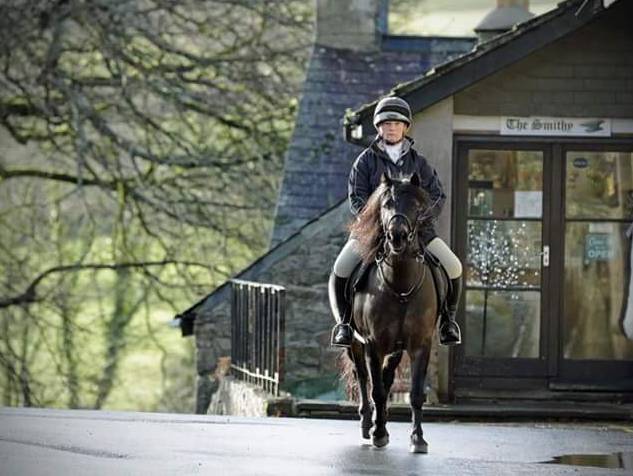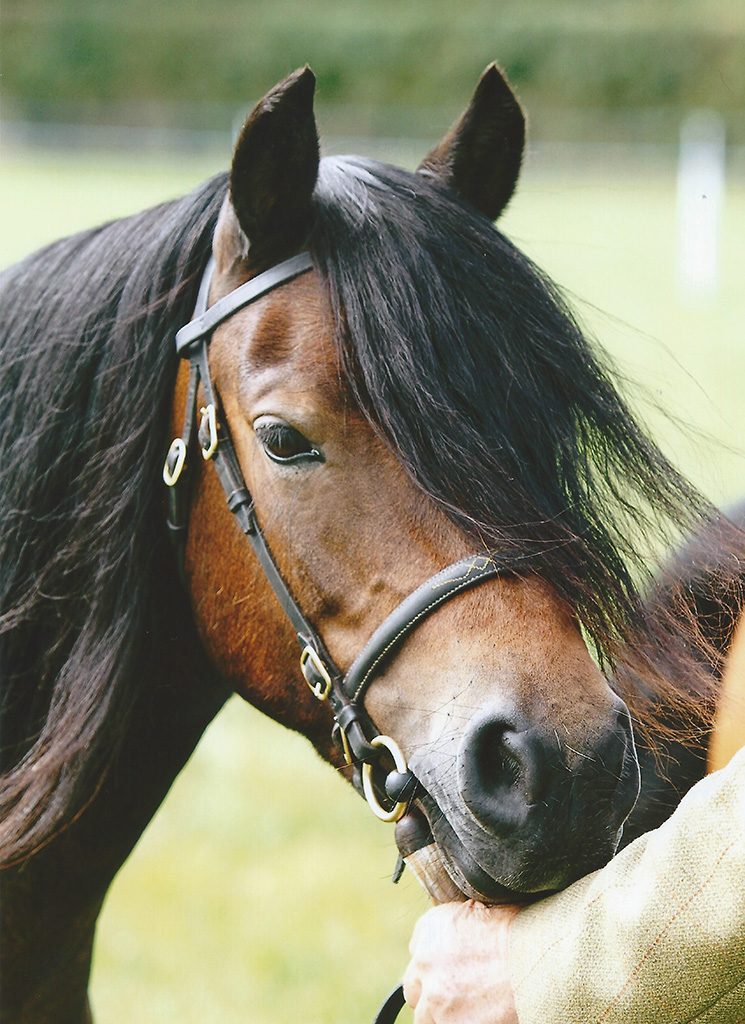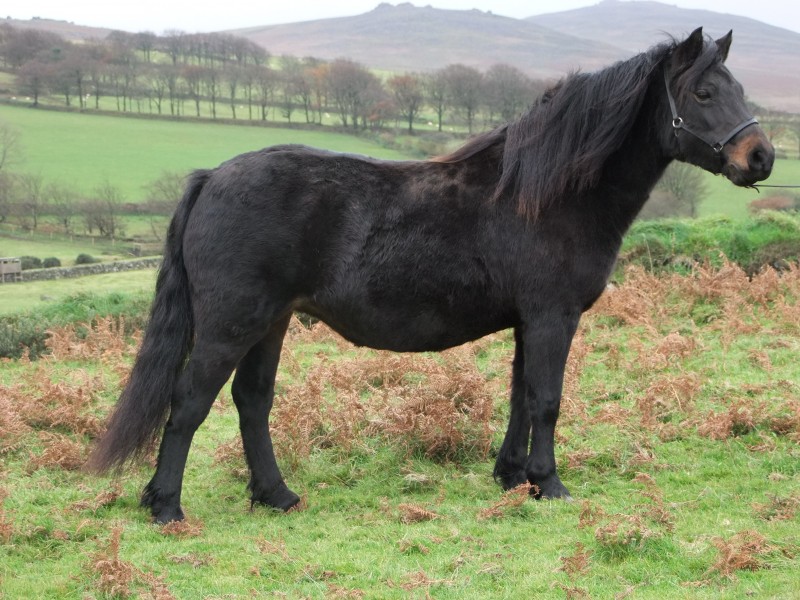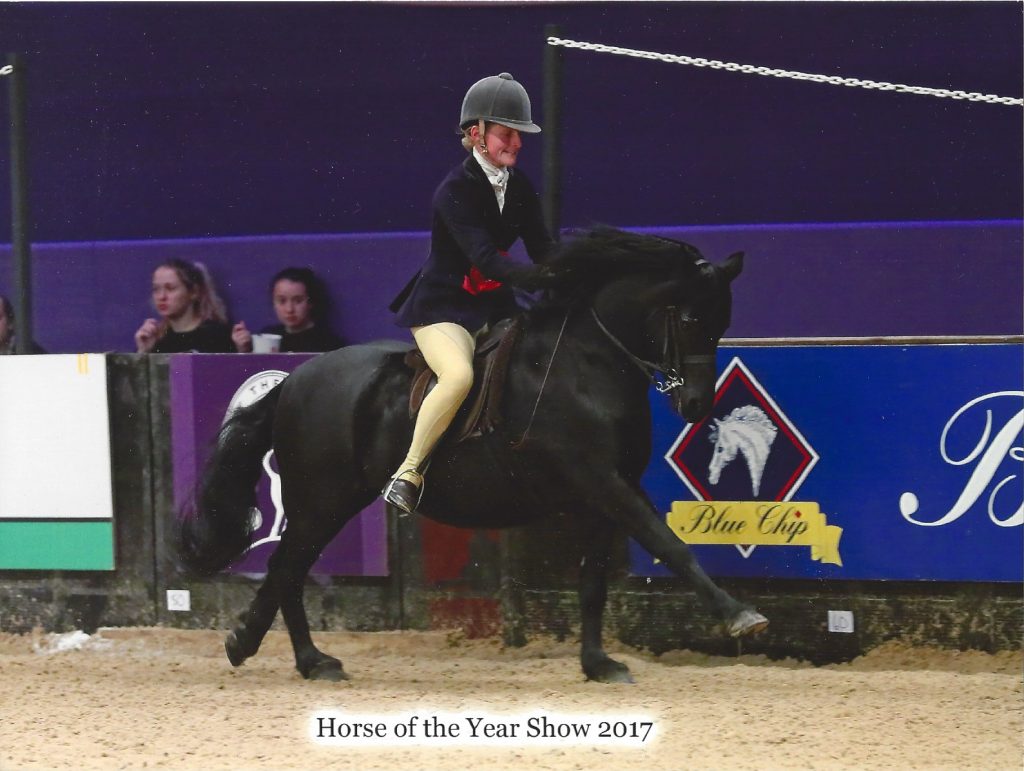The native pony breed of the county of Devon in the South West of England. The ponies have been recorded living on the wild and inhospitable moors of Dartmoor since the Middle Ages.
The ponies have the metabolism to prosper in the tough and uncompromising conditions they have to contend with.
The ponies have an exceptional temperament and breeders have long realised their potential as children’s ponies with the ability to make wonderful companions, give endless fun and if required compete and succeed in all spheres of competition.
The Pedigree Dartmoor Pony
The Dartmoor Pony Society represents the Pedigree Dartmoor Pony. There are many ponies living on Dartmoor, all sizes and colours, most of unknown breeding.
The true to type Dartmoor Pony with known breeding is recognised as a rare breed by the Rare Breeds Survival Trust and is typical of the ponies seen in the show ring at County Shows throughout the United Kingdom.
If you require a pony for your children to ride or you wish to show it at whatever level you aspire to, be it your local show, County Show or to qualify for The Year of Horse Show or Olympia, it is the Pedigree Dartmoor Pony that you require.
For more images visit the Photo Gallery.

The Breed Standard of the Dartmoor Pony

| Height | Not Exceeding 127 cm. (12.2hh.) |
| Colour | Bay, brown, black, grey, chestnut, roan. Piebalds, Skewbalds and Spotted are not allowed. A certain amount of white is and always has been acceptable. Excessive white markings to be discouraged. |
| Neck & Head | The head is small and bloodlike, reasonably short from eye to muzzle and without much tapering to the nose. The ears are small and alert and the eyes fairly large giving the pony a kindly interested expression. It should be well set on a good neck of medium length. The throat and jaws should be fine and showing no signs of coarseness or throatiness. Stallions to have a moderate crest. |
| Shoulders | Good shoulders are most important. They should be well laid back and sloping, but not too fine at the withers. |
| Body | Of medium length and strong, well ribbed up with a good depth of girth giving plenty of heart room. |
| Loin & Hindquarters | Strong and well covered with muscle. The hind quarters should be of medium length and neither level nor steeply sloping. The tail is well set up. |
| Limbs | The forelegs should not be tied in at the knee. The fore-arm should be muscular and relatively long and the knee fairly large and flat at the front. The cannons should be short with ample good, flat bone. The pasterns should be sloping but not too long. The feet should be hard and well shaped. The hocks should be well let down with plenty of length from hip to hock, clean cut and with plenty of bone below the hock. They should have a strong second thigh. They should not be 'sickled' or 'cow-hocked' |
| Movement | Low and straight coming from the shoulder with good hock action but without exaggeration. |
| General | The Dartmoor is a very good looking riding pony, sturdily built yet with quality, like a scaled down middleweight hunter. The mane and tail should be full and flowing. The general impression given by a Dartmoor is of a well made, quality pony with ample bone which stands over plenty of ground. |
| Updated 01/2020 |




